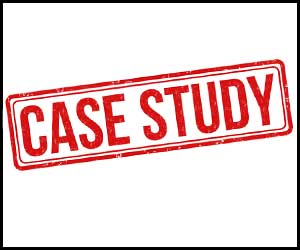- Home
- Editorial
- News
- Practice Guidelines
- Anesthesiology Guidelines
- Cancer Guidelines
- Cardiac Sciences Guidelines
- Critical Care Guidelines
- Dentistry Guidelines
- Dermatology Guidelines
- Diabetes and Endo Guidelines
- Diagnostics Guidelines
- ENT Guidelines
- Featured Practice Guidelines
- Gastroenterology Guidelines
- Geriatrics Guidelines
- Medicine Guidelines
- Nephrology Guidelines
- Neurosciences Guidelines
- Obs and Gynae Guidelines
- Ophthalmology Guidelines
- Orthopaedics Guidelines
- Paediatrics Guidelines
- Psychiatry Guidelines
- Pulmonology Guidelines
- Radiology Guidelines
- Surgery Guidelines
- Urology Guidelines
CPR for over 5 hours revived hypothermic cardiac arrest patient: a report

Dr Melanie Kuhnke at Swiss Air Rescue, Swiss Air-Ambulance (Rega), Zurich, Switzerland and colleagues have reported a rare case of Prolonged cardiopulmonary resuscitation more than 5 hours in a case of hypothermic cardiac arrest. The case has appeared in the Journal of Medical Case Reports.
Cardiac arrest from severe accidental hypothermia is a rare event. The clinical outcome may be favourable if patients are resuscitated in time and rewarmed until the return of spontaneous circulation. Successful rewarming from severe hypothermia without extracorporeal life support use as performed in this case suggests that patients with primary hypothermic cardiac arrest have a chance of a favourable neurological outcome even after several hours of cardiac arrest when cardiopulmonary resuscitation and conventional rewarming are performed continuously.
A 52-year-old lightly dressed Italian mountaineer was hiking alone on an Italian glacier at 3085 m, when he fell about 15 m into a crevasse at approximately 14:00 (Fig. 1). Ice-water was pouring over him, but he was able to breathe. His wife alerted a rescue team to report him missing. After over 7 hours in the crevasse, he was found and rescued at 21:40. He complained about being cold but was in no pain. Then he lost consciousness. Night had fallen and low clouds prevented a helicopter rescue. Thus, extraction using terrestrial mountain rescue with a snowcat was commenced. He remained unconscious but was spontaneously breathing; oxygen saturation was 84% with 2 L oxygen/minute through a face mask at a heart rate of 60/minute. His trachea was not intubated at this stage because the mountain rescuers on site were only basic life support certified.
At 22:33, after arrival at a mountain pass at 2750 m, he developed ventricular fibrillation (VF), which initially responded to immediate defibrillation, but then recurred. ROSC was achieved two more times with a total of six defibrillations; his blood pressure was 120/70 mmHg. During resuscitation, he was intubated. A Swiss rescue helicopter with night-flying capability was requested to transport the patient directly to an ECLS rewarming centre. When the helicopter arrived at 23:40, his oesophagal temperature was 26.0 °C. An electrical warming blanket (Geratherm® UniqueResc+, Geratherm Medical AG, Geschwenda, Germany) was placed on his abdomen, and a mechanical chest compression device was placed in case of VF recurrence.
Soon after, VF recurred and was terminated with one defibrillation, but after a few minutes, VF recurred again. Three further defibrillation attempts remained unsuccessful; thus, continuous CPR with mechanical chest compression (AutoPulse®, Zoll Medical, Cologne, Germany) was started, further defibrillation attempts were considered obsolete at a core temperature of 26.0 °C [3]. Weather conditions again precluded transport to the ECLS centre and he was air transferred to the closest rural hospital. An arterial blood gas analysis showed a pH of 7.2, lactate 11.2 mmol/L, partial pressure of oxygen in arterial blood (paO2) 18.1 kPa, and potassium 2.7 mmol/L. This encouraged the team to continue CPR and conventional rewarming and to push for either transport of the patient to an ECLS centre or for a portable ECLS device to be transferred to the patient. In the meantime, the mechanical chest compression device was exchanged with a LUCAS®, because it featured a plug-in power supply (LUCAS®, Jolie AB, Physio-Control, Lund Sweden). Conventional rewarming was performed with forced warm air (Bair Hugger®, 3 M, St. Paul, MN, USA) over his abdomen and inferior extremities and intravenously with warmed normal saline. Warm cotton blankets were placed on his chest around the LUCAS® device and over his head and changed every 15–30 minutes. The net rewarming rate was 0.7 °C/hour.
After a total of 5 hours and 44 minutes of CPR with 4 hours of mechanical CPR and at a core temperature of 29.8 °C, conversion into sinus rhythm occurred spontaneously with sustained ROSC. Finally, at 5:30 a.m., transport by terrestrial ambulance was undertaken across a mountain pass. At 6:20 a.m., weather conditions allowed transport by air to the nearest ECLS center (Zurich, Switzerland). On arrival, his core temperature was 33.4 °C, sinus rhythm. By then, ECLS rewarming was no longer required.
On the second day after admission to the ECLS centre, he was awake with a Glasgow Coma Scale of 15. Respiratory and renal failure required mechanical ventilation and continuous hemofiltration, followed by intermittent dialysis with good recovery of renal function. He was ventilated for 12 days, extubated on day 15 and discharged from the intensive care unit on day 20. Seven weeks after the accident, he was discharged home from rehabilitation with complete neurological recovery despite a persisting neuropathy in his feet and hands. Four months after the accident, he resumed his job.
Journal of Medical Case Reports
For more details click on the link: https://doi.org/10.1186/s13256-019-2282-6

Disclaimer: This site is primarily intended for healthcare professionals. Any content/information on this website does not replace the advice of medical and/or health professionals and should not be construed as medical/diagnostic advice/endorsement or prescription. Use of this site is subject to our terms of use, privacy policy, advertisement policy. © 2020 Minerva Medical Treatment Pvt Ltd